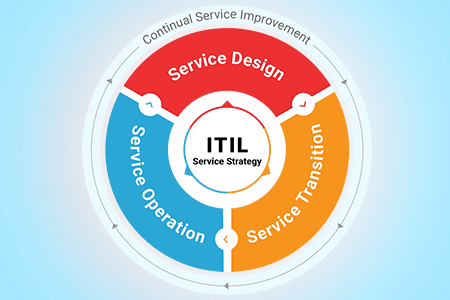IT Infrastructure Library Vs IT Service Management
For starters, ITSM stands for Information Technology Service Management. It refers to the actual practice of overseeing and controlling IT operational services. Meanwhile, ITIL or Information Technology Infrastructure Library is a framework that consists of the best practices for setting up ITSM in an organization.
It is vital to fully comprehend the differences between ITSM and Information Technology Infrastructure Library processes. Why? Because it helps you come up with strategic decisions on setting up, streamlining, and improving your operations. Without knowing this, you may make costly mistakes and waste valuable resources.
Defining ITSM and ITIL Processes
ITSM deals with the activities involving the design, creation, implementation, support, and overall management of IT services. As compared to IT systems management and network management which is focused merely on technology, ITSM is catered toward customers. Emphasis is put on the continuous improvement of processes, services, and IT infrastructure. Doing so can boost efficiency and cost savings.
Information Technology Infrastructure Library is a structured set of ITSM best practices. These procedures, tasks, and checklists are not specific to the organization but they can be integrated into the organization's strategy. ITIL is divided into five aspects, each covering a different ITSM lifecycle stage. These include service strategy, service design, service transition, service operation, and continual service improvement.
Now, let's discuss the key differences between ITSM and ITIL processes.

ITIL is the foundation for ITSM implementation
One way to understand how ITIL and ITSM differ is by looking at the relationship of the two. ITIL is commonly utilized anywhere in the world to implement ITSM. Some of the top authorities that manage IT services have worked together many decades ago to set a standard for implementing ITSM. ITIL is the result of this effort. Information Technology Infrastructure Library is regularly updated over the course of years.
Now, you may ask why organizations don't create their own implementation frameworks. It's because ITIL is already tried and tested. The brains that conceived this have thought through everything, and as proof, many organizations have been successful in adopting it.
There are other frameworks used to implement ITSM
Although ITIL is the most common framework for implementing ITSM, it is not the only option available. Other frameworks can complement ITIL or take the place of ITIL in part or as a whole. Take, for example, COBIT which focuses on governance, audit, and compliance. Lean works well with ITIL, targeting continual process improvement. DevOps can replace certain aspects of ITIL in bringing efficient new business functionality. Organizations are free to choose what implementation frameworks can suit their needs.
ITIL can be used in parts to implement ITSM
ITIL is not the only structured plan that can help implement ITSM. You can just opt for certain components of ITIL that will be beneficial to your organization. Organizations can initially begin implementing ITSM processes little by little, (e.g. incident management and change management). Avoid implementing all ITSM capabilities at once. You would want to build a strong business case first that shows how strong the return will be using the components of your ITSM investment.
The journey to ITSM maturity can take years. The latest version of ITIL, known as ITIL 4, is consisting of 34 management practices categorized into three, namely: general, service, and technical.
Inefficient ITIL execution may cause organizations to fail at ITSM
ITIL does not ensure that you will have a foolproof implementation of ITSM. Just like other implementation frameworks, you need to fully commit to ITIL. Follow the principles of organizational change management, including getting the approval of the upper management, supporting employees before, during, and after a change, and taking care of employees' negative reactions to change. To have a successful ITSM implementation, you need to create alignment between the ITIL framework and the organization's strategic goals.
Final Words
If you are aiming to improve your ITSM practices and implement the ITIL framework, you need to adopt a solution that is capable of supporting you to meet your objectives. A good option is ITarian. It offers an ITSM platform that encompasses the core ITIL processes such as asset management, incident management, problem management, and change management. Allow us to guide you on your ITSM journey and we will help you achieve your business goals